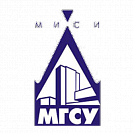Construction
Construction is one of the vital infrastructural branches, responsible for economic development and the everyday comfort of the population. The industry is one of the leaders in terms of jobs in the country. Meanwhile, modern construction requirements are leading to its significant transformation.
Changes in this area take a long time to happen. Nevertheless, standard and custom construction projects are beginning to utilize advanced materials to provide higher comfort, environmental safety and operational cost-efficiency (e.g. reduced energy consumption). Advanced materials enable new architectural and design solutions that were impossible to implement before. For example, optical fiber concrete will make rooms brighter; carbon fiber will allow flexible structures; kinetic glass will control oxygen levels by “inhaling” air from the outside and “exhaling” it back. Some traditional materials, such as wood, are back in demand. More and more large structural elements will be prefabricated at factories, to be assembled into a building at the construction site.
On the other hand, traditional labor is being replaced by 3D printing technologies. Behrokh Khoshnevis, Professor at the University of Southern California, invented a layer-by-layer printing method, which he expects to allow for the “printing” of entire concrete buildings. A portable structure, taller than the house to be built, will be able to recreate a building to a particular drawing in 20 hours. The technology will be perfect for emergency construction, e.g. after acts of God, or for construction of affordable housing. London Architectural Office Foster+Partners is working on a lunar home project. A tube frame with an inflatable dome will be coated with a special foam material by a robot equipped with a 3D printer. The material will be produced on the spot, from moon soil mixed with magnesium oxide. Similar technologies can be applied in mass construction on Earth.
In standard construction, the processes of designing, erecting and operating buildings are becoming automated. New buildings are constructed to suit energy efficiency and smart environment requirements. Along with technologies allowing automation of standard construction, a market for personalized homes will also develop. Customers of tailored projects will be more actively involved in the planning and construction process.
Growing mobility will lead to the popularity of easily transportable houses. Aside from variously equipped wheeled mobile homes, building block houses will appear that can be easily and quickly assembled from prefabricated elements. Another area is turnkey construction of cities, i.e. with all the buildings, utilities and other amenities.
New industrial methods and advanced materials will allow for increases in labor productivity and will make the industry safer.
Professions
The profession appears after 2020
Specialist engaged in the design of sustainable buildings, fully self-sufficient in terms of power thanks to microgeneration technology (alternative energy sources, trigeneration, i.e. using three energy sources at once: electricity, heat and cold), and utilization of energy-saving materials and structures.
Professional skills and abilities
Systems thinking (ability to define and work with complex systems, including system engineering).
Cross-industry communication skills (understanding of technologies, processes, and market conditions in different related and unrelated sectors).
Ability to manage projects and processes.
Lean manufacturing, production process management based on permanent focus on removing all types of waste, which implies involving every employee in the business optimization process along with maximum client focus.
Programming IT solutions / Managing complex automated systems / Dealing with artificial intelligence.
Client focus, ability to address customer requests.
The profession appears before 2020
Determines the degree of wear and tear of structures and buildings, selects solutions (including the use of advanced materials) for their renovation and reinforcement. The specialty is especially popular in the reconstruction of historical city centers.
Professional skills and abilities
Systems thinking (ability to define and work with complex systems, including system engineering).
Cross-industry communication skills (understanding of technologies, processes, and market conditions in different related and unrelated sectors).
Ability to manage projects and processes.
Lean manufacturing, production process management based on permanent focus on removing all types of waste, which implies involving every employee in the business optimization process along with maximum client focus.
Programming IT solutions / Managing complex automated systems / Dealing with artificial intelligence.
Ability to work under high uncertainty and quickly changing conditions (quick decision-making, prompt reaction to changing work conditions, ability to allocate resources and manage personal time spending).
Environmentally conscious thinking
The profession appears after 2020
Designs structure models and selects the best sets of components for their printing; supports the house printing process.
Professional skills and abilities
Systems thinking (ability to define and work with complex systems, including system engineering).
Cross-industry communication skills (understanding of technologies, processes, and market conditions in different related and unrelated sectors).
Ability to manage projects and processes.
Lean manufacturing, production process management based on permanent focus on removing all types of waste, which implies involving every employee in the business optimization process along with maximum client focus.
Programming IT solutions / Managing complex automated systems / Dealing with artificial intelligence.
Client focus, ability to address customer requests.
Environmentally conscious thinking
The profession appears before 2020
Specialist who designs a construction site in terms of its environmental impact in order to advise companies on solutions the least harmful for the environment.
Professional skills and abilities
Systems thinking (ability to define and work with complex systems, including system engineering).
Cross-industry communication skills (understanding of technologies, processes, and market conditions in different related and unrelated sectors).
Client focus, ability to address customer requests.
Environmentally conscious thinking
The profession appears before 2020
Specialist in the development of infrastructural solutions for children, senior persons and disabled persons around properties (e.g. playgrounds, elevators for the disabled, signboards for people with impaired eyesight, ramps, recreational space, etc.).
Professional skills and abilities
Lean manufacturing, production process management based on permanent focus on removing all types of waste, which implies involving every employee in the business optimization process along with maximum client focus.
Client focus, ability to address customer requests.
Ability to work with teams, groups and individuals.
Creative abilities, developed aesthetic taste.
The profession appears before 2020
Specialist involved in the entire life cycle of a project. Building Information Modeling(BIM) is the gathering and comprehensive processing of all architectural, constructional, technological, economic, and other data about the building, with all relations between them, in a design that treats the building and everything related to it as a single object.
Professional skills and abilities
Systems thinking (ability to define and work with complex systems, including system engineering).
Cross-industry communication skills (understanding of technologies, processes, and market conditions in different related and unrelated sectors).
Ability to manage projects and processes.
Lean manufacturing, production process management based on permanent focus on removing all types of waste, which implies involving every employee in the business optimization process along with maximum client focus.
Programming IT solutions / Managing complex automated systems / Dealing with artificial intelligence.
Environmentally conscious thinking
The profession appears before 2020
Construction specialist using digital structure designs. Can use image recognition systems to evaluate the construction progress and adjust the process based on the data analysis.
Professional skills and abilities
Systems thinking (ability to define and work with complex systems, including system engineering).
Cross-industry communication skills (understanding of technologies, processes, and market conditions in different related and unrelated sectors).
Ability to manage projects and processes.
Lean manufacturing, production process management based on permanent focus on removing all types of waste, which implies involving every employee in the business optimization process along with maximum client focus.
Programming IT solutions / Managing complex automated systems / Dealing with artificial intelligence.
Ability to work with teams, groups and individuals.
The profession appears after 2020
Specialist in the design, installation and adjustment of smart home management systems (e.g. appliances, security systems, electricity and water supply systems, etc.). Smart homes are appearing already. However, the job is not likely to become popular until seven to ten years from now.
Professional skills and abilities
Systems thinking (ability to define and work with complex systems, including system engineering).
Cross-industry communication skills (understanding of technologies, processes, and market conditions in different related and unrelated sectors).
Ability to manage projects and processes.
Programming IT solutions / Managing complex automated systems / Dealing with artificial intelligence.
Client focus, ability to address customer requests.
The profession appears before 2020
Professional with a good knowledge of advanced construction technologies (e.g. structures made of advanced materials used to upgrade existing buildings and structures, utilization of advanced solutions for electricity and water supply, water discharge and air conditioning in offices, residential buildings, etc.), and promoting them in the industry and implementing them in particular projects.
Professional skills and abilities
Systems thinking (ability to define and work with complex systems, including system engineering).
Cross-industry communication skills (understanding of technologies, processes, and market conditions in different related and unrelated sectors).
Ability to manage projects and processes.
Lean manufacturing, production process management based on permanent focus on removing all types of waste, which implies involving every employee in the business optimization process along with maximum client focus.
Environmentally conscious thinking
Where can i receive basic training
in the specialty?
Novosibirsk state medical University (NSMU)
First Moscow state medical University. I. M. Sechenov (Moscow state medical UNIVERSITY)
Russian national research medical University n. a. N. I. Pirogov (emphasis on personalized medicine, General medicine)
Moscow architectural Institute (MARCHI)
National research Moscow state construction University
St. Petersburg state architecture and civil engineering (SPSUACE)
Southern Federal University (SFEDU)
Far Eastern state technical University named after V. V. Kuibyshev (FESTU)
Ural Federal University named after the first President of Russia B.N.Yeltsin
Nizhny Novgorod State University of Architecture and Civil Engineering
Employers in the Russian Federation
Oboronstroy (and 66 affiliated Russian companies)
Do you like the page? Share with friends!










































